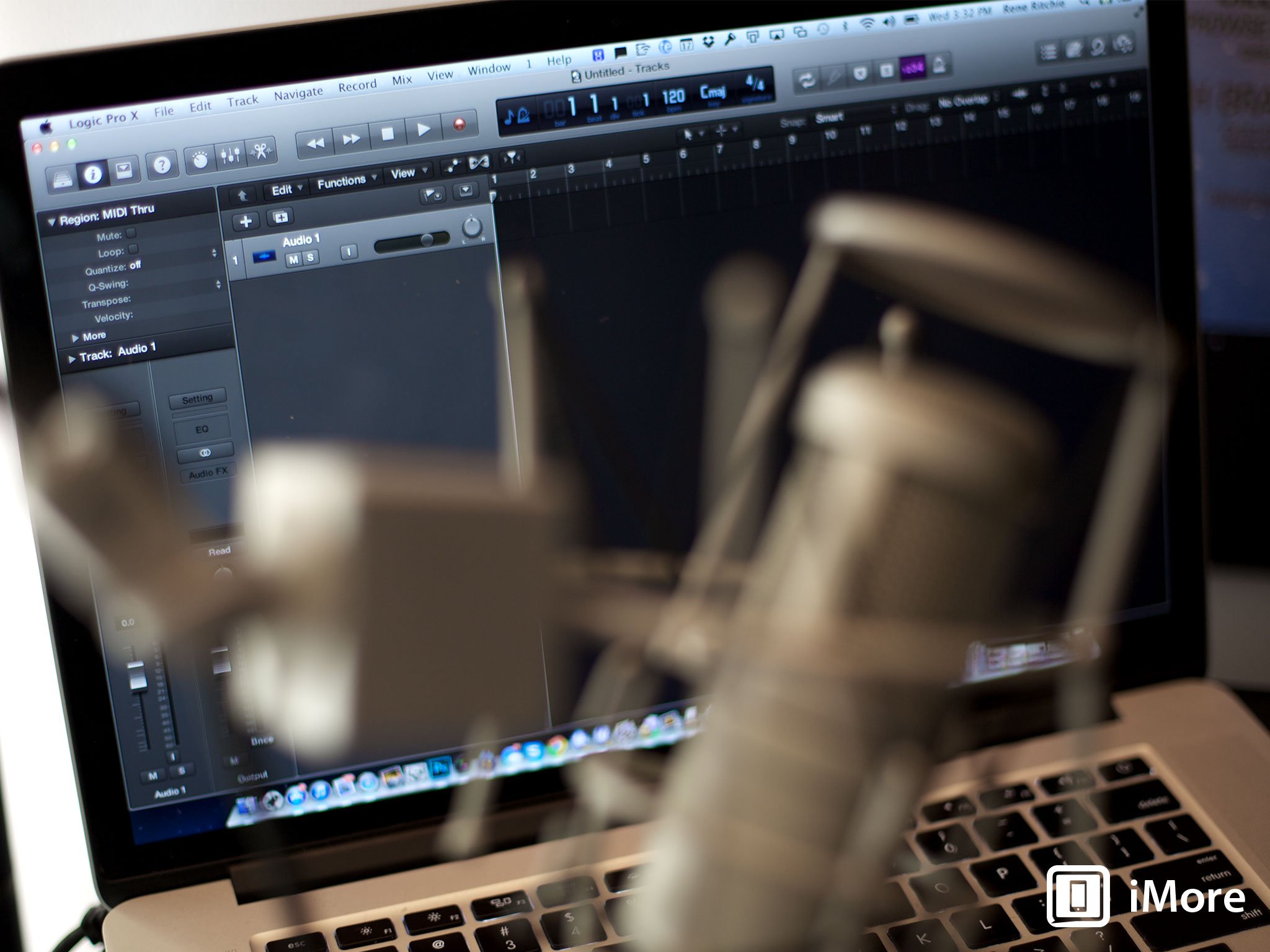Logic Pro X is not only a great podcast and audio editing choice for the money—it is great, period.
Logic Pro X is the latest in a line of re-imagined software from Apple, something they started doing years ago with their video apps, iMovie and later, Final Cut Pro X. This new, more mainstream-friendly direction hasn't been without controversy, especially among professionals. So what does it means for Logic Pro users - and potential Logic Pro users - in general, and for podcasting in particular?
When you visit the main page for Logic Pro X on Apple’s web site, there’s a slogan that reads “Music production. Cranked up to X.” That’s how Apple is promoting the update to their flagship audio product—as a music production tool.
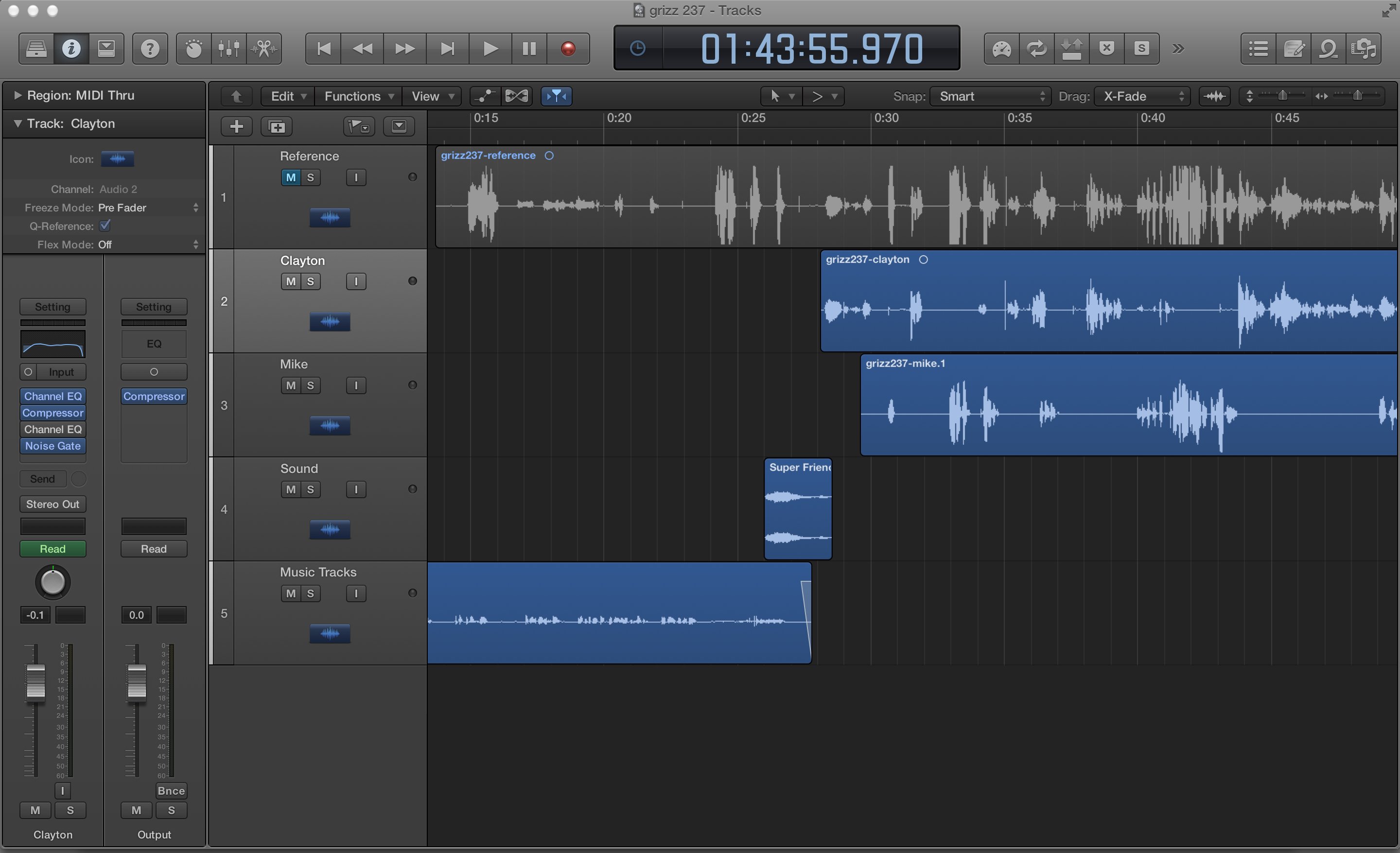
I’m a podcaster, but I’ve also been a saxophonist for more than 25 years. I’ve played more polkas and scuffled through more choruses of John Coltrane’s ‘Giant Steps’ than I can count. I just don’t use Logic that often for music production. However, I’ve been using Logic for podcast production since 2010.
At $199 on the Mac App Store, the bang for the buck is amazing. Yes, it is loaded with tons of loops, virtual instruments and MIDI sequencing features us podcasters may never use. Well, at least until we decide to compose our own theme songs! But at its core, Logic is a full-featured audio recording, editing, and mixing environment that meets or exceeds the capabilities of similar DAW (Digital Audio Workstation) programs.
To put Logic Pro X in its proper context for podcasters, however, we need to also talk about some other options...
Logic Pro X vs. Pro Tools
Pro Tools 11 is a killer product, but it’s $700. To be honest, Pro Tools will always be my first love when it comes to audio software. I teach it every day at the collegiate level. (Full disclosure: I worked for Avid, the maker of Pro Tools, for seven years.)
I don’t think your shows will sound $500 better, nor will you get them done $500 more efficiently with Pro Tools compared to Logic Pro X.
I switched to Logic from Pro Tools because it offers faster than real-time "bounce". That means I can export a show in mere minutes. Prior to Pro Tools 11, exports were real-time. That meant a 60 minute podcast would take 60 minutes to export. That’s an eternity in deadline situations!
The playing field has been leveled with regard to export times in Pro Tools 11, but the price difference remains. I don’t think your shows will sound $500 better, nor will you get them done $500 more efficiently with Pro Tools compared to Logic Pro X.
Logic Pro X vs. Adobe Audition
Audition CC seems like a logical choice for podcast production. After all, it’s an audio-only tool. There’s not a single tick of MIDI data, and no vintage synth emulators to be found. In fact, it’s the editing tool of choice for countless radio stations around the world thanks in large part to its origins as a Windows-based application called Cool Edit Pro. It is renown for editing speed and dependability, even on now-ancient PCs.
Chris Breen of Macworld wrote an excellent review of Audition CC. In it he pointed out some terrific restoration and corrective tools in Audition that are very beneficial to podcasters. He also pointed out a potentially deal-breaking caveat - Audition CC is available only through a subscription plan—you can’t purchase it outright. If you stop paying, it stops working.
With Logic Pro X, you own it for $199. Granted, there will eventually be a new version that requires you to fork over more coins from the couch. But the version you buy today will continue working on your existing hardware/OS setup pretty much indefinitely.
Logic Pro X and podcasting
So, is Logic Pro X overkill for podcasting? In a way, yes, but so was Logic Pro 9. An even better and potentially more controversial question would be: Is GarageBand underkill for podcasting? I think so.
It’s time for some real talk. I get asked about GarageBand all the time. A lot of people use GarageBand for podcasting and it seems to work fine for them. I’m normally a gentle person, but it drives me into giant-Hulk-like-green-rage-monster fury. Personally, I like to have more control over what I’m doing, and I encourage others to strive for the same.
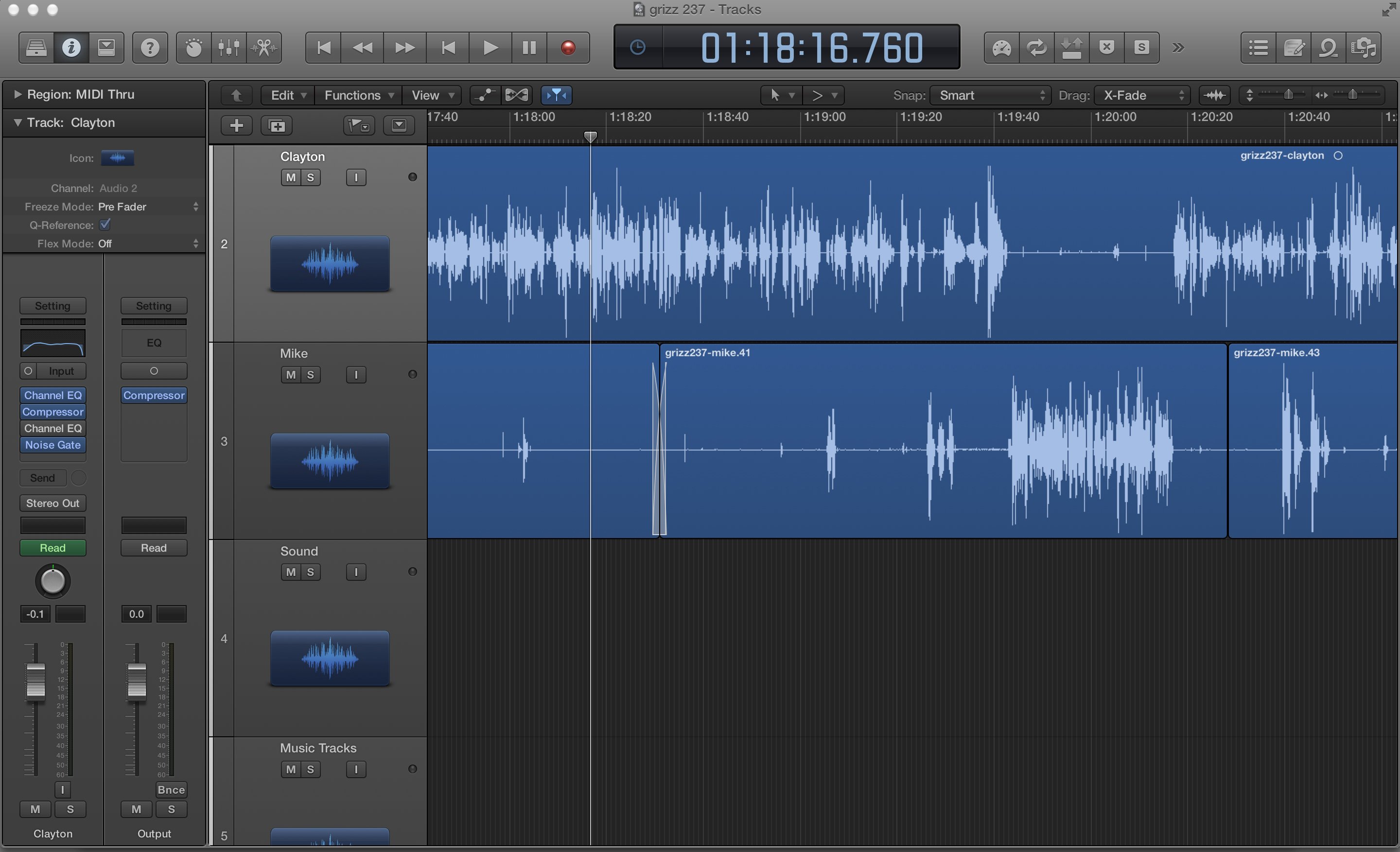
For podcasters already using Logic Pro as well as those thinking about taking the plunge, I really like what Apple has done with the new version. The user interface of Logic Pro X is not drastically different in functionality from its predecessor, but it does have a fresh, clean new look with a darker color palette that looks especially good on my MacBook Pro with Retina display.
The various tools and options are better organized. I had no problem getting to work right away in the new version. I edited the most recent episode of the Grizzly Bear Egg Café without a hitch. Project files from versions as old as Logic 5 can be opened in Logic Pro X. Backward compatibility is a huge plus.
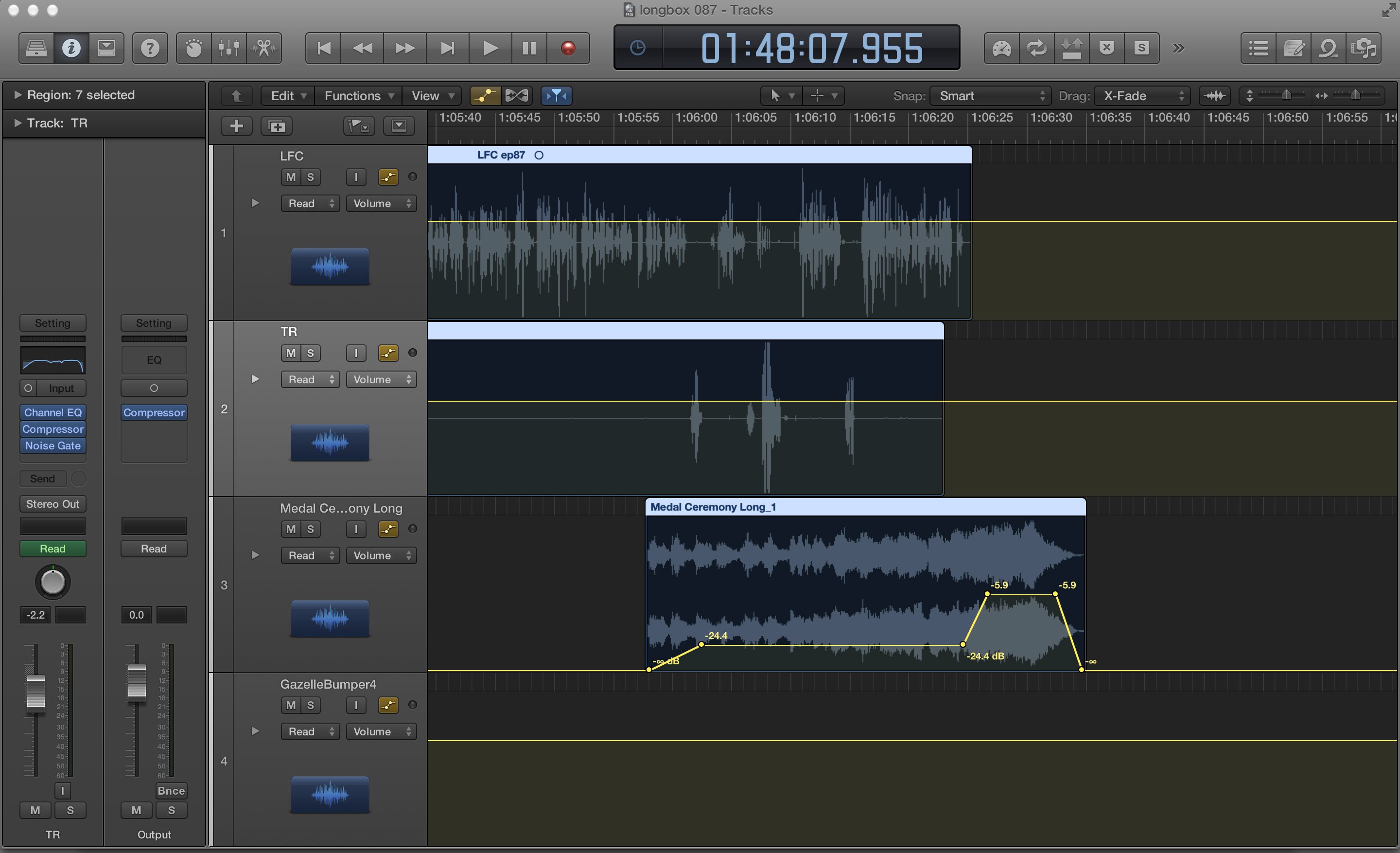
Every editing and mixing tool I rely on was either in the same/similar location or easier to get to. For example, the controls for using processing inserts have been improved. It’s easier than before to toggle plug-ins on/off, change parameters, or switch to a different type of process. Also, the default keyboard shortcut mapping puts more editing functions under your fingertips without having to program your own keystrokes or click on icons.
Another option is the ability to disable unneeded functions of the program. A preference window allows you to hide things like MIDI tools, Surround mixing options, destructive audio editing or the music notation editor. This is a nice feature for new users as well as experienced podcasters who want to unclutter the UI even further.
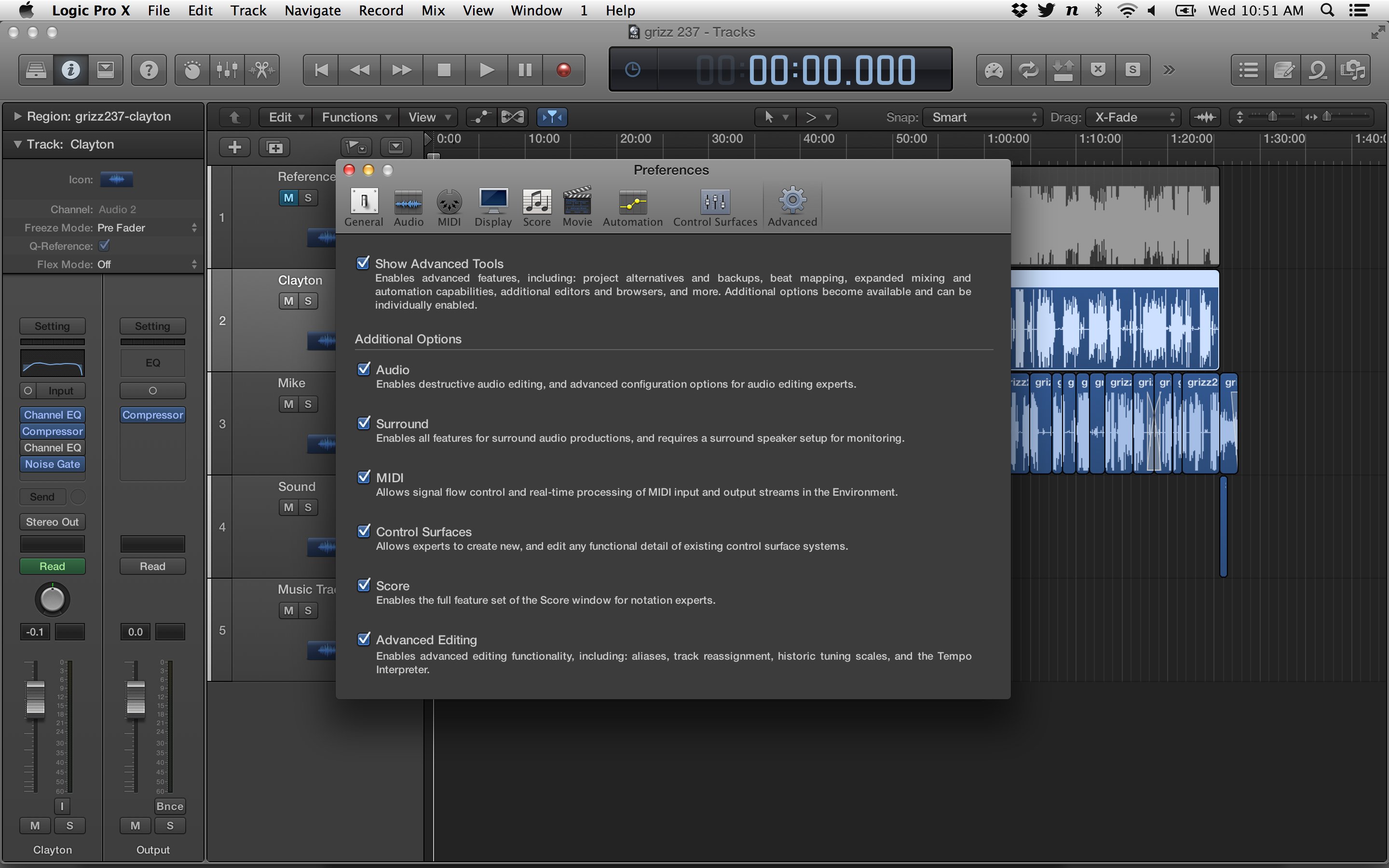
If you’re coming from GarageBand, you’ll be more at home than you would have been in Logic Pro 9. As Jim Dalrymple from The Loop puts it in his review (http://www.loopinsight.com/2013/07/16/review-logic-pro-x/), Apple has made the software more “approachable” to new users. I couldn’t agree more, and I’d also add that it’s easier to use for experienced professionals. It’s familiar, but new in an exciting way.
To echo another point Jim Dalrymple makes: This is not “GarageBand Pro”. Apple has not dumbed down Logic or stripped away significant features the way they did for the introduction of Final Cut X. It remains a complex and serious professional tool for those who choose to dig in deep. Logic has had a notoriously steep learning curve. I think the discoverability of features has improved. It’s not magically easy to use now, but it has gotten noticeably better in that regard.
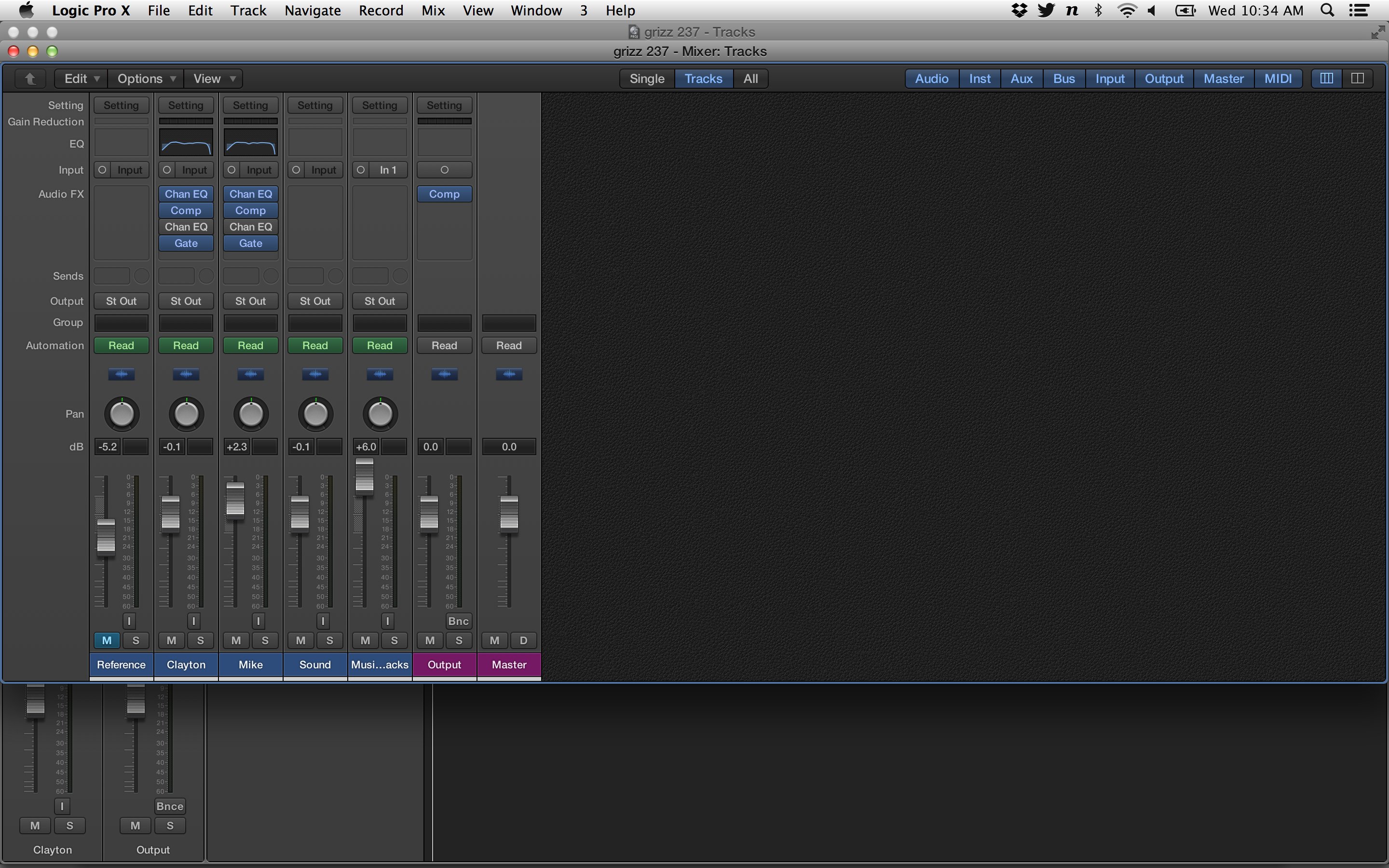
The bottom line
If you're already using Logic Pro 9, the upgrading to Logic Pro X isn't something you need to rush out and do right away. The improvements in usability are not major, but they certainly are welcome. That said, I think anyone on version 9 will want to upgrade eventually. At some point, compatibility with Logic Pro 9 is bound to be broken by an OS update or inability to run on newer hardware. If you’re on a MacBook Pro with Retina display, however, you’ll probably want to upgrade sooner rather than later so you can start enjoying the updated graphics of the UI.
If you’ve never purchased Logic, now is the perfect time to jump on board.
If you’ve never purchased Logic, now is the perfect time to jump on board. It looks great and it’s easier to use than before. I used it for real work on day one without incident. I’m certain there will be some bugs and subsequent patches that crop up. But in my experience, this release is solid.
There is a lot of great audio production software on the market. I think we’re spoiled by how many options exist. Not only is Logic Pro X a great choice for the money—it is great, period.
- $199 - Download now
Jim Metzendorf has been using Macs since 1994. He is a podcaster, freelance audio/video editor, and author of ‘The Professional's Guide to Audio Podcast Production'. Jim also teaches audio production at a college in Cleveland, Ohio. Follow him on Twitter: @jmetzendorf
